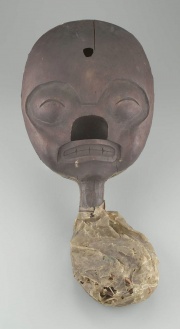Difference between revisions of "Bladder"
Jump to navigation
Jump to search
(username removed) |
(username removed) |
||
| Line 10: | Line 10: | ||
== Authority == | == Authority == | ||
| − | * | + | * Ralph Mayer, ''A Dictionary of Art Terms and Techniques'', Harper and Row Publishers, New York, 1969 (also 1945 printing) |
| − | * | + | * Random House, ''Webster's Encyclopedic Unabridged Dictionary of the English Language'', Grammercy Book, New York, 1997 |
* ''The American Heritage Dictionary'' or ''Encarta'', via Microsoft Bookshelf 98, Microsoft Corp., 1998 | * ''The American Heritage Dictionary'' or ''Encarta'', via Microsoft Bookshelf 98, Microsoft Corp., 1998 | ||
Revision as of 06:26, 24 July 2013
Description
A tough proteinaceous membrane that serves as a receptacle for air or liquid. Isinglass, a high quality glue, is made from the swim bladders of Russian sturgeon. Additionally, animal bladders were used from the mid 17th century for storing and dispensing prepared paint media (Mayer 1969). By the mid-18th century, commercial artist paint manufacturers switched to refillable brass tubes, then soon after to collapsible tin tubes.
Additional Information
R. Mayer, A Dictionary of Art Terms and Techniques, Harper and Row, New York, 1969.
Authority
- Ralph Mayer, A Dictionary of Art Terms and Techniques, Harper and Row Publishers, New York, 1969 (also 1945 printing)
- Random House, Webster's Encyclopedic Unabridged Dictionary of the English Language, Grammercy Book, New York, 1997
- The American Heritage Dictionary or Encarta, via Microsoft Bookshelf 98, Microsoft Corp., 1998
